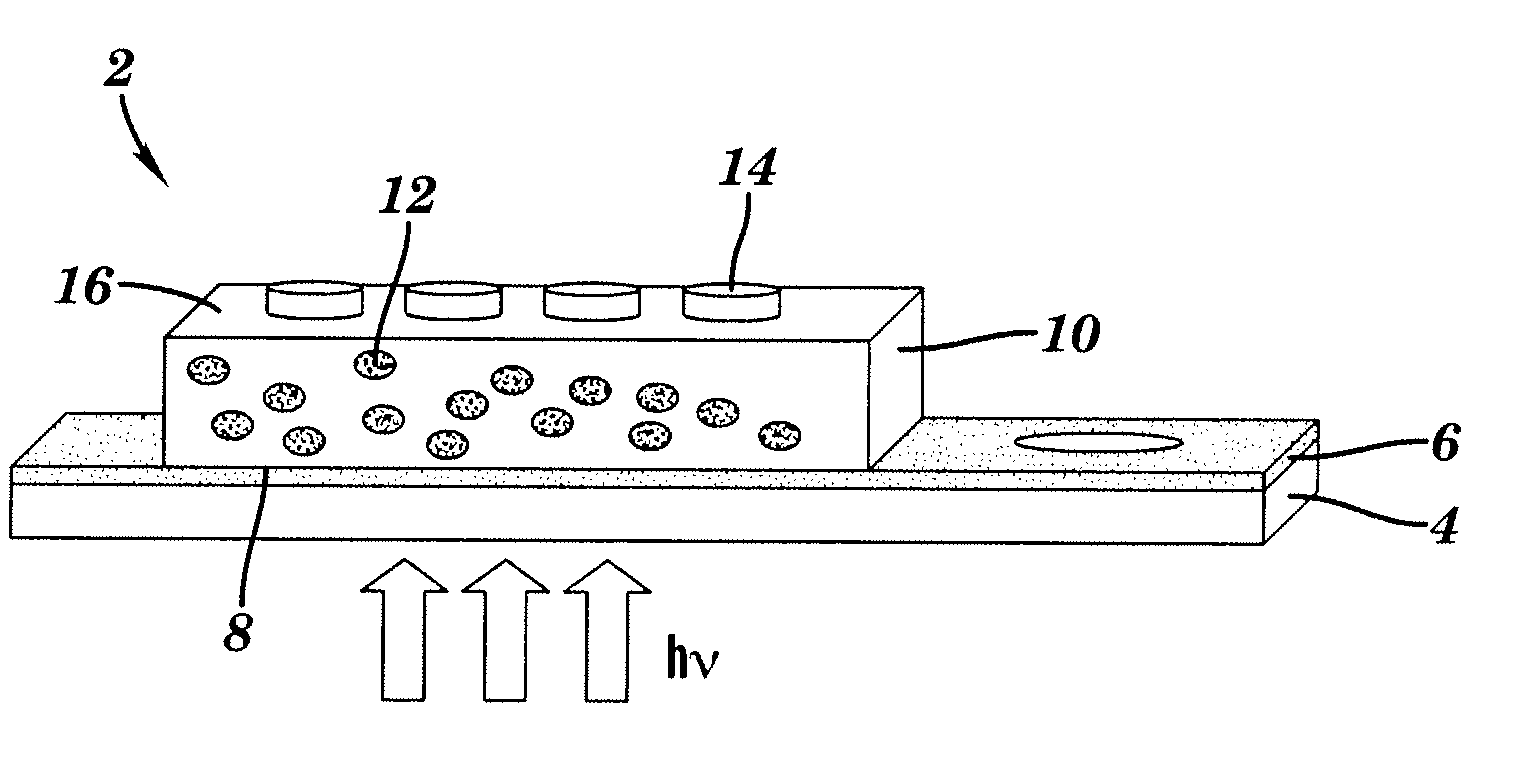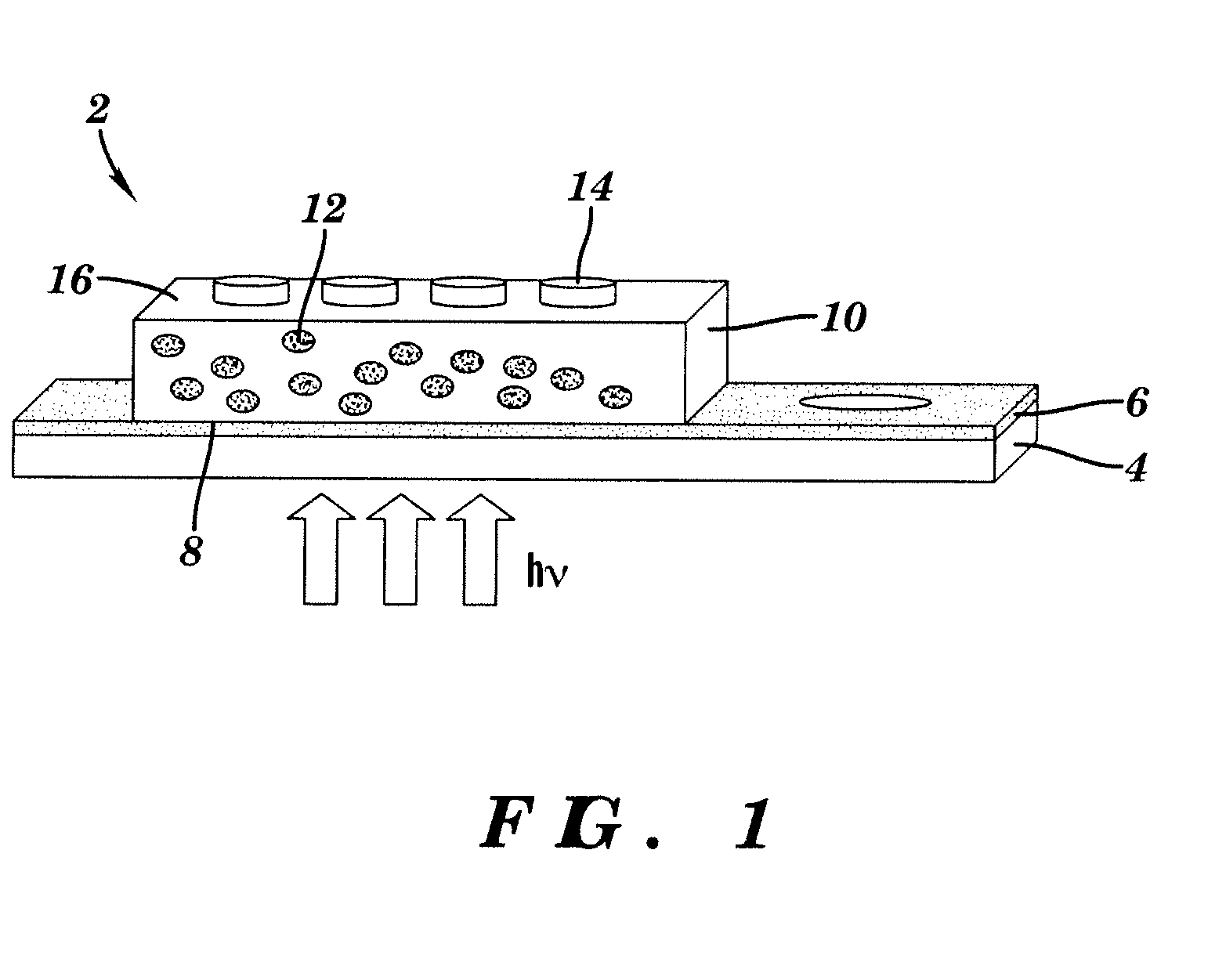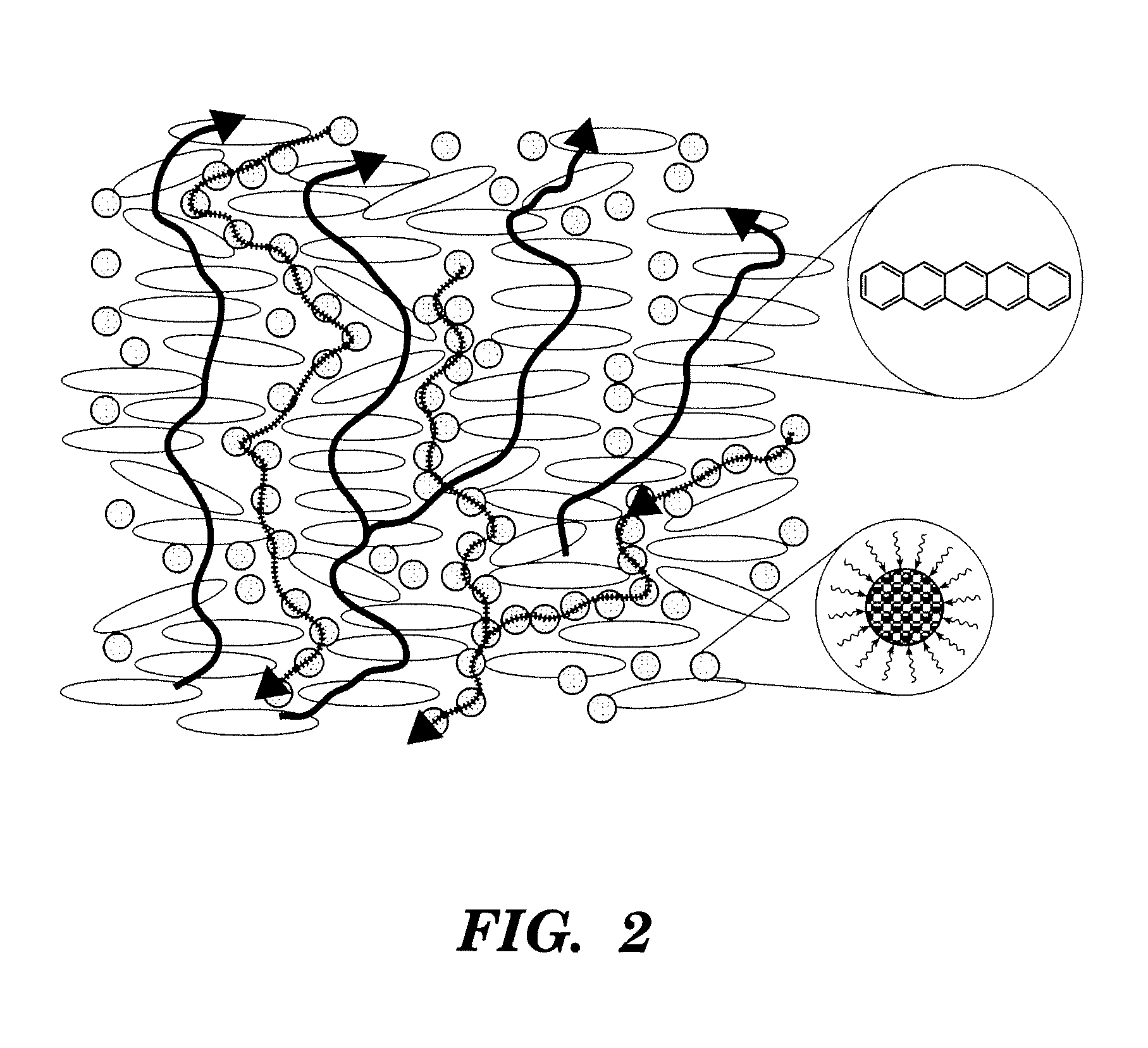Nanocomposite devices, methods of making them, and uses thereof
- Summary
- Abstract
- Description
- Claims
- Application Information
AI Technical Summary
Benefits of technology
Problems solved by technology
Method used
Image
Examples
example 1
Synthesis of PbSe Quantum Dots
[0042]Discretely sized (Inset (b) of FIG. 3) PbSe QDs were prepared by a hot colloidal route using organically soluble precursors (Choudhury et al., “Efficient Photoconductive Devices at Infrared Wavelengths Using Quantum Dot-Polymer Nanocomposites,”Appl. Phys. Lett., 87:073110 (2005), which is hereby incorporated by reference in its entirety). PbO (5 mmol) and oleic acid (25 mmol) were added to 20 mL tri-n-octyylamine. The reaction mixture was heated under alternate vacuum and argon atmosphere for 30 minutes at 155° C., when 10 mL 1M TOP-Se (i.e. selenium dissolved in tri-n-octylphosphine) was rapidly injected into the reaction flask. The reaction took place instantaneously giving rise to uniform sized PbSe QDs. The product was syringed out in different fractions as a function of time from the reaction mixture and quenched in toluene. The QDs were cleaned off to remove excess surfactant oleic acid and other side products by precipitation with excess ac...
example 2
Preparation of a Soluble Precursor to Pentacene
[0043]The soluble pentacene precursor was prepared by the Diels-Alder reaction between pentacene and N-sulfinylacetamide, following Afzali et al., “High-Performance, Solution-Processed Organic Thin Film Transistors from a Novel Pentacene Precursor,”J. Am. Chem. Soc., 124(30): 8812-8813 (2002), which is hereby incorporated by reference in its entirety. In particular, N-sulfinylacetamide (840 mg, 8 mmol) was added to pentacene (556 mg, 2 mmol) and methyltrioxorhenium (30 mg, 0.12 mmol) in chloroform (30 mL). The mixture was refluxed for 12 hours and filtered after cooling. The product was purified by flash column chromatography (silica gel; chloroform). The resulting material was easily converted to pentacene by the retro Diels-Alder reaction under various backing temperatures, as shown in FIG. 4.
example 3
Introduction of Soluble Pentacene Precursor and Composite Device Fabrication
[0044]In a typical device fabrication procedure, the organic polymer PVK and the pentacene precursor in different proportions were dissolved in a known volume chloroform. Chloroform dispersions of oleic acid-capped PbSe QDs (with absorption tuned to 1340 nm) were then added and the composite solution was homogenized by vigorous stirring and ultrasonication, before being spin-cast on an indium tin oxide (ITO)-coated glass substrate to yield composite thin films. The resulting samples were dried overnight in vacuum to ensure complete solvent removal. Next, the dried films were annealed at 200° C. to let the precursor undergo thermolysis to generate pentacene in situ (FIG. 4). Finally, aluminum electrodes were thermally evaporated through a shadow mask to yield devices with active area ˜0.04 cm2 (FIG. 1). The average thickness of the composite film was determined to be about 100 nm.
[0045]The absorption spectra ...
PUM
| Property | Measurement | Unit |
|---|---|---|
| Area | aaaaa | aaaaa |
| Polymeric | aaaaa | aaaaa |
| Semiconductor properties | aaaaa | aaaaa |
Abstract
Description
Claims
Application Information
 Login to View More
Login to View More - R&D
- Intellectual Property
- Life Sciences
- Materials
- Tech Scout
- Unparalleled Data Quality
- Higher Quality Content
- 60% Fewer Hallucinations
Browse by: Latest US Patents, China's latest patents, Technical Efficacy Thesaurus, Application Domain, Technology Topic, Popular Technical Reports.
© 2025 PatSnap. All rights reserved.Legal|Privacy policy|Modern Slavery Act Transparency Statement|Sitemap|About US| Contact US: help@patsnap.com



